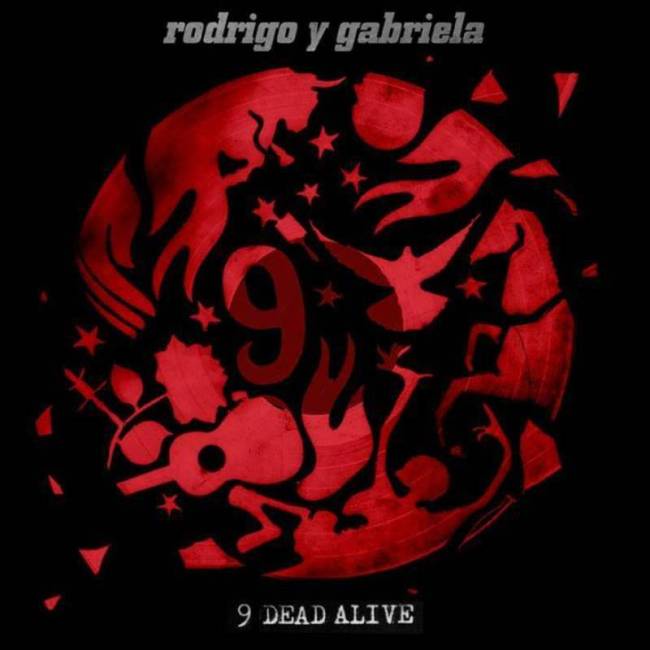
Damon Albarn
“Everyday Robots”
(Warner Bros.)
Twenty years after he became a Brit-pop poster boy as lead singer of Blur, Damon Albarn has released his first solo album.
He’s been busy in the meantime, fronting cartoon hip-hop band Gorillaz, forming the supergroup The Good, the Bad and the Queen and even writing a couple of operas. So “Everyday Robots” is hardly the work of a novice -- rather of a man in his 40s looking back with a mixture of wonder and regret.
The songs, suffused with nostalgic melancholy, blend the digital and the organic, scattering samples of speech and street sounds over electronic beats, winsome guitar and plinky piano.
Lyrically, Albarn explores the tension between isolation and connection in the digital age, and the feelings of guilt and absolution that come with aging.
The melancholy title track sets the tone, with Albarn’s vulnerable vocals laid over ragged samples and jagged violin. It’s an understated number that worms its way under the skin.
“Hostiles” and “Hollow Ponds” continue the mood of languid reverie, while “You and Me” refers to Albarn’s long-ago use of heroin, a drug he has said he found alluring and dangerous.
There are a couple of more up-tempo numbers in “Mr. Tembo” -- an ode to an orphaned baby elephant -- and “Heavy Seas of Love,” a low-key sing-a-long featuring Brian Eno and a church choir.
More typical of the bittersweet mood are “Lonely Press Play” (“If you’re lonely, press play”) and the lovely, delicately hopeful “Photographs (You Are Taking Now).”
“Everyday Robots” is an album of subtle pleasures. (AP)

Rodrigo y Gabriela find magic on new album
Rodrigo y Gabriela
“9 Dead Alive”
(ATO Records)
Wielding only acoustic guitars, Rodrigo Sanchez and Gabriela Quintero conjure a mix of influences to create a sound that might only have been dreamed up by classical guitar great Andres Segovia, if he’d been born listening to Santana and Metallica.
On “9 Dead Alive,” Rodrigo y Gabriela’s first new album in five years, the duo strips down to return to the raw, ferocious energy that won them global acclaim after they were discovered busking in Ireland. Alone with their guitars, the couple indeed create a whole far greater than their two instruments.
Each of the album’s nine instrumentals pays tribute to “enduring touchstones” such as writer Fyodor Dostoyevsky and abolitionist Harriet Tubman, plus one string-bending thumper, “Torito,” honoring animals and nature. On the opening track, “The Soundmaker,” they bow to classical guitar godfather Antonio de Torres Jurado with a technically gorgeous piece in which Rodrigo furiously soars as Gabriela powerfully beats her guitar into a percussion piece. “Megalopolis,” their haunting homage to Chilean poet Gabriela Mistral, weaves Rodrigo’s fragile melody through Gabriela’s melancholic rhythm.
The self-produced album recorded at the couple’s studio on Mexico’s Pacific Coast gives space for their untouched musical expression. The mix by acclaimed rock engineer Andrew Scheps is the perfect treatment, expertly restrained to allow Rodrigo and Gabriela’s magic to flourish on its own. (AP)

Death’s raw closer caps epic punk trilogy
Death
“III”
(Drag City)
Feverish and socially conscious, the final set of Death’s 1970s recordings affirms why they rose from the ashes and gained an audience after debuting in 2009.
“III,” the Detroit-based sibling trio’s third album, is their grooviest collection yet. It comes after the label Drag City released the group’s stylistic hard rock album recorded in 1974, “... For the Whole World to See,” in 2009. “Spiritual, Mental, Physical” followed in 2011.
On “III,” the Hackney brothers have mellowed the thrashing, though the hard and fast still dominates when they muse on the grimy “North Street.” But they have more funk, soul and psychedelic sounds on the latest effort, which includes songs recorded in 1975, 1976, 1980 and 1992.
Guitarist David -- who died of lung cancer in 2000 -- paces himself on the intro, an instrumental simply titled “Introduction by David” (vocalist Bobby and drummer Dannis round out the trio). David’s eerie, bewitching riffs begin steady, but after a lengthy pause, irrupt in a wash of lavish, hurried reverb.
Leading with a line of spoken word, “We Are Only People” is a spaced out trip that slowly reaches a jamming rock climax. It’s the most satisfying moment next to the bluesy “Open Road,” which offers a funky bent rhythm chopped by pregnant pauses.
Two of the nine songs were recorded at Groovesville studio in Detroit, while most of the others were cataloged at the trio’s home. Due to the poor recording quality, the vocals sound distant and muffled on a few tracks, but their tight progressions never falter. (AP)
-
Articles by Korea Herald











![[Hello India] Hyundai Motor vows to boost 'clean mobility' in India](http://res.heraldm.com/phpwas/restmb_idxmake.php?idx=644&simg=/content/image/2024/04/25/20240425050672_0.jpg&u=)








